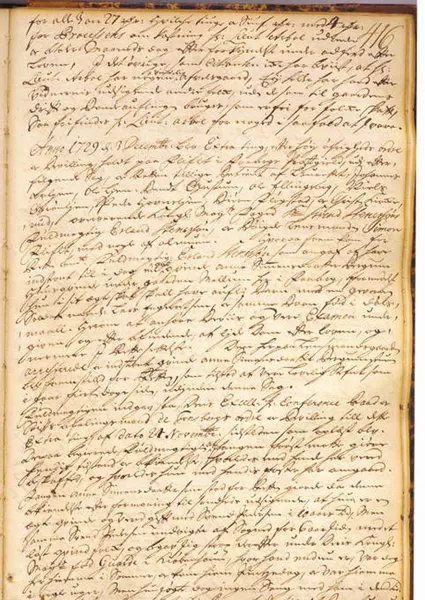- 1/1
Anne Simensdatters rettssak i 1729. Fra utstillingen 'Fortiet. Aborthistorien'
On 3 December 1729, Anne Simensdatter Bergumstuen, tenant wife on the farm Mellum, stood before a jury, charged with having been made pregnant by a soldier, Lars Engebretsen, and with having given birth in secret. Anne had been a married woman for ten years, but her husband left after four of them, with another woman, and enlisted with the Royal Guard in Copenhagen. By then, Anne had already given birth to three children. This year, her husband had been at home for the Pentecost. She had hoped to be reconciled with him as she had just discovered, to her despair, that she was pregnant. The father of the child had been an enlisted dragoon, home on leave for a short time, but who had then rejoined his regiment and been killed.
Anne told the court that during the haymaking that year, Anne aborted, and crammed the foetus in under the stairs of the Fåberg Church. During the trial against her, they found nothing here, just some bones, and she was pressured into giving a different explanation. Several witnesses came forth and told that she had been ill in service, and shown off some bone remains to them. After this, Anne told that she had hidden the stillborn child, divided it into pieces, and shown people the pieces to convince them that the foetus was rotting inside her. All of this, to be reconciled with her husband again.
She was sentenced to death by beheading. The jury and the judge believed that she had killed her child. The case was taken all the way to the Danish-Norwegian supreme court, while Anne was imprisoned by Constable Fliflet. She received no pardon. Her three little children were forced to go from neighbouring farm to neighbouring farm and beg, while her husband remained with the guard in Copenhagen.
... and still she could not understand how to have and nurse the child, and so it was that in summer in the first haymaking or late in July, the foetus left her... and she swaddled it in a napkin and a few days later, put it in under the stairs by the eastern church door at Faaberg's Main Church...
Cæcilie Stang: Lillehammer og Fåbergs historie. Der veger møtes, volume 1, part 2, 1996.
Quote from Gudbrandsdalens sorenskriver embeter, Tingbok nr. 11 (1727–1729) for Nord- ogSør-Gudbrandsdalen, Folio s. 416; transcribed by Inger-Karin Martinsen, Statsarkivet, Hamar.
